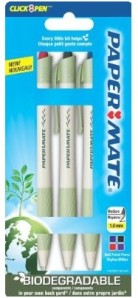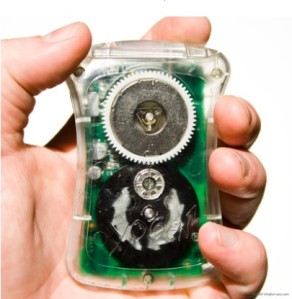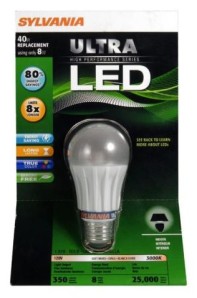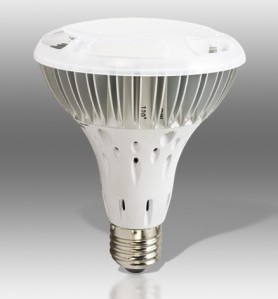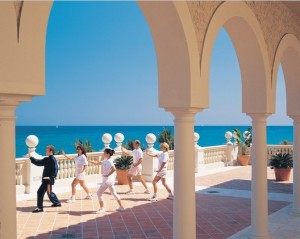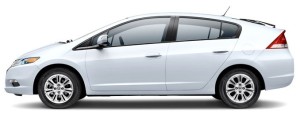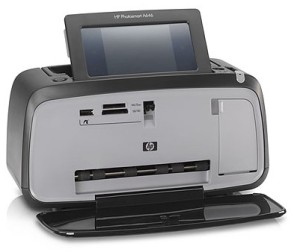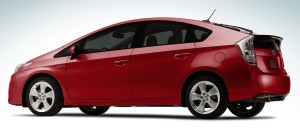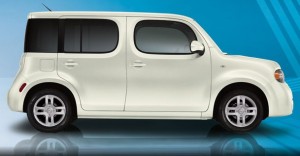|
The 3rd Generation Toyota Prius - Greenest car on the road (image via Toyota website) |
No need for waffling here. The verdict is simple. The
Toyota Prius gets top honors for the most eco-friendly car I've driven thus far.
Over 10 days of driving and nearly 2000 miles, the 3rd generation version of this iconic hybrid champ delivered fuel efficiency (mostly on highways with 70 mph speed limits) in the 45 mpg range.
I had a chance to test the
2nd generation Prius back on last summer's Colorado trip and I have to say that this new generation takes a dramatic step forward in comfort and driving performance.
The 2010 car comes with both EV mode and Power mode buttons. Press the EV mode and the car will operate off electric power only provided the battery has enough juice and you're moving slowly enough. Press the Power button and you get a potent boost of acceleration that lets you rocket onto the highway or scoot past other cars in the parking lane. (I'll admit it, I got a thrill from passing both a BMW and a Porsche on the highway in the Prius.)
The top-of-the-line
V version of the Prius came loaded with luxurious extras including heated side mirrors, heated front seats, a voice-activated touch screen DVD navigation system, satellite radio, integrated backup camera and so forth. I'll admit that I never figured out how to work out some of the options (like
Intelligent Parking Assist).
The
Radar Cruise Control is a nifty feature that takes us one step closer to the notion of self-driving cars. Basically, a radar device in the nose of the car can sense if you're getting too close to the car in front of you and try to adjust accordingly. If you're already a fan of cruise control, the Radar version will probably make you even happier, but personally I've found that I usually can get better mileage and feel safer with cruise control off on all but the most empty roadways.
My favorite geeky tool on the Prius V was the
Lane Keeper Assist (LKA) device that actually keeps track of the lanes and not only beeps to warn you if you're veering outside the lines, but actually gives you a nudge back toward the center of the lane. (Putting on the turn signal supersedes the LKA so you don't need to worry about fighting the car when it comes time to exit the highway or switch lanes.) I think LKA could literally be a lifesaver on dark roads or in cases where the driver is a little bit tired. I wouldn't say it eliminates the need to pay attention or to get enough rest, but LKA definitely seems like the best active safety device I've seen since inventions like Anti-Lock Brakes and Vehicle Stability Control.
From a design standpoint, the new Prius has better lines on the outside and more comfort on the inside. Focusing on the sharp lines of the exterior, I think the Prius has truly entered the 'beautiful car' category.
Meanwhile on the inside, with the rear seats folded down, the cargo capacity seemed voluminous. I liked the high clearance on the hatchback door. The seats were supportive and reasonably comfortable even after 9+ hours on the road. The view through the rear window is still somewhat obstructed by a horizontal solid panel, but Toyota has definitely improved visibility over the previous generation Prius.
Really, I have only two complaints about the Prius. One is mileage. Yes, the Prius gets great mileage, but for the price (more on this later), I would have liked even better mileage. Call me demanding, but since I somehow managed to achieve 50+ mpg in a 2nd generation Prius, I would have hoped to get at least 50 mpg in the next generation Prius.
The second issue is price. Highway mileage of 45 mpg is great, but these days lots of conventional gasoline-engine cars are knocking on the mid-30s in terms of highway mpg. My wife and I will be doing some car shopping ourselves in the near future, and despite being an eco-conscious shopper, I'm having some trouble justifying the Prius premium.
After all, the
2010 Toyota Corolla is rated at 35 mpg on the highway and I've seen promotions for Corolla leases for around $160/month. By contrast, I haven't seen the Prius offered with any lease specials at all. (I called one dealer and was told that a Prius lease would probably cost me $300-500/month.) For folks who prefer leasing, this makes the Prius relatively unattainable. (From a straight purchase standpoint, you'll pay around a $7,000 premium for a Prius over a Corolla.)
So ultimately, the Prius is a fun car and a fantastic choice for any eco-friendly driver. But I keep hoping that Toyota will push the envelope more in terms of both mpg and affordability. Perhaps we'll see some new developments next year in terms of a hybrid Yaris that will check both those boxes?
Perpetually unsatisfied. I suppose so. But that's what makes me excited about all the eco-friendly advancements I think we'll see this year and beyond. We've made great strides in terms of Green gadgets and tools, but there is still a long way to go to get to the point where we can enjoy comfortable high-tech lives without placing too much of a burden on the planet.
PS - Interested observers have inquired as to the relative environmental costs of producing a Prius compared to a typical gasoline-only (i.e. non-hybrid automobile). I asked Toyota about this and received a response from Wade Hoyt, Northeast PR manager that " the Prius's manufacturing carbon footprint is slightly higher [than the footprint of a non-hybrid mid-size sedan]. However, when looking at its total lifecycle assessment, including manufacturing, plus the in-use life of the car, as well as its end-of-life recyclability, Prius's carbon footprint is significantly smaller." I tried to get some hard data to quantify the Prius's carbon footprint advantage, but was told that such data has not been released outside the company.
Where to Buy:
At your
local Toyota dealer, of course! The
2010 Prius starts at $22,400, but prices can climb steeply from there. With delivery and processing fees added in, my tester car had a total MSRP of $32,771. Ouch.
Disclosure: Toyota generously allowed me to test drive the Prius for more than a week.





